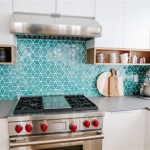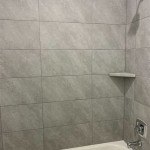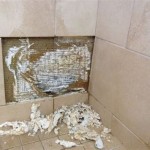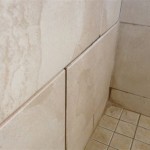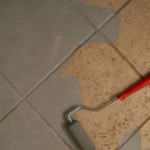The Advantages of Faux Marble Tiles
Faux marble tiles have emerged as a popular alternative to natural marble in both residential and commercial design projects. This manufactured option replicates the aesthetic appeal of genuine marble while offering a range of practical benefits that address common concerns associated with its natural counterpart. This article explores the advantages of faux marble tiles, examining their durability, cost-effectiveness, maintenance requirements, design versatility, and environmental impact.
Durability and Longevity
One of the primary advantages of faux marble tiles lies in their superior durability when compared to natural marble. Natural marble, a porous stone, is susceptible to staining, scratching, and etching from acidic substances. This inherent vulnerability necessitates vigilant maintenance and protective measures to preserve its original appearance. Faux marble tiles, typically constructed from porcelain or ceramic, exhibit significantly enhanced resistance to these forms of damage. Porcelain, in particular, is known for its density and low water absorption rate, rendering it highly impervious to stains from spills, food, and cleaning agents. This inherent resistance reduces the likelihood of permanent marking and simplifies the cleaning process.
Moreover, faux marble tiles possess greater resistance to scratching and abrasion. While natural marble can be easily scratched by everyday objects, the hard, glazed surface of faux marble tiles offers a protective barrier against such damage. This characteristic makes them a suitable choice for high-traffic areas, such as hallways, kitchens, and commercial spaces, where surfaces are exposed to frequent wear and tear.
The manufacturing process of faux marble tiles also contributes to their longevity. Unlike natural marble, which can vary in density and structural integrity depending on the quarry from which it's extracted, faux marble tiles are produced under controlled conditions, ensuring consistent quality and minimizing the risk of defects. This consistency translates to increased resistance to cracking, chipping, and other forms of structural damage, extending the lifespan of the tiling installation.
The dimensional stability of faux marble also surpasses that of natural marble. Natural marble can be prone to expansion and contraction with temperature fluctuations, which can lead to cracking or loosening of tiles over time. Faux marble tiles, on the other hand, exhibit minimal dimensional change, reducing the risk of these issues and ensuring the long-term stability of the tiled surface.
Cost-Effectiveness
The cost of natural marble can be a significant barrier for many homeowners and businesses. The extraction, processing, and transportation of natural marble are labor-intensive processes, contributing to its high price point. Moreover, the inherent variations in color, veining, and quality necessitate careful selection, often involving expert consultation and potentially higher costs for premium slabs. Faux marble tiles offer a more budget-friendly alternative, providing a similar aesthetic at a fraction of the price.
The manufacturing process of faux marble tiles is more efficient and less resource-intensive than the extraction and processing of natural marble. This translates to lower production costs, which are then passed on to the consumer. Furthermore, the consistent quality and availability of faux marble tiles reduce the need for extensive selection processes, saving time and potentially minimizing material waste. In addition to the lower initial purchase price, the durability and reduced maintenance requirements of faux marble tiles contribute to long-term cost savings. By minimizing the need for repairs, replacements, and specialized cleaning products, faux marble tiles offer a more economical solution over the life of the installation.
Installation costs can also be lower for faux marble tiles. Due to their consistent size, shape, and weight, faux marble tiles are typically easier to install than natural marble slabs, which can vary significantly in size and thickness. This ease of installation can reduce labor costs and project timelines, further enhancing the cost-effectiveness of faux marble tiles.
The reduced waste associated with faux marble tile production also contributes to its cost-effectiveness. Natural marble extraction can generate significant amounts of waste material, while the manufacturing of faux marble tiles can be optimized to minimize waste and reuse materials. This streamlined production process translates to lower overall costs and reduced environmental impact.
Maintenance and Cleaning
Maintaining the pristine appearance of natural marble requires diligent effort and specialized cleaning products. Its porous nature makes it susceptible to staining, requiring immediate attention to spills and regular sealing to prevent penetration of liquids. The use of harsh chemicals and abrasive cleaners is also discouraged, as they can damage the surface and dull the finish. Faux marble tiles, on the other hand, are significantly easier to maintain, requiring minimal effort to keep them looking their best.
The non-porous surface of faux marble tiles resists staining, simplifying the cleaning process. Spills can be easily wiped away with a damp cloth and mild detergent, without the risk of permanent marking. The absence of pores also eliminates the need for regular sealing, saving time and money on maintenance. The resistance to scratches and abrasion further reduces the need for specialized cleaning products and techniques. Ordinary household cleaners can be used safely and effectively to remove dirt, grime, and other surface contaminants.
The ease of cleaning faux marble tiles makes them a suitable choice for busy households and commercial spaces where time and resources for maintenance are limited. Their low-maintenance nature ensures that the tiled surface remains attractive and functional with minimal effort, reducing the burden on housekeeping staff and homeowners. Furthermore, the resistance to mold and mildew makes faux marble tiles a hygienic choice for bathrooms, kitchens, and other areas prone to moisture exposure. Their smooth, non-porous surface inhibits the growth of these microorganisms, contributing to a healthier indoor environment.
In addition to routine cleaning, faux marble tiles are also less susceptible to damage from accidental spills and impacts. Their durable construction and scratch-resistant surface minimize the risk of permanent damage from dropped objects or abrasive materials. This inherent resilience reduces the need for costly repairs and replacements, ensuring the long-term beauty and functionality of the tiled surface.
Design Versatility
Faux marble tiles offer a wide range of design possibilities, allowing homeowners and designers to achieve the desired aesthetic without the constraints of natural marble. Advances in manufacturing technology have enabled the creation of faux marble tiles that closely mimic the appearance of various marble varieties, from classic Carrara and Calacatta to bolder and more exotic patterns. This versatility allows for seamless integration into a wide range of design styles, from traditional to contemporary.
Faux marble tiles are available in a variety of sizes, shapes, and finishes, providing further flexibility in design. Large-format tiles can create a sense of spaciousness and minimize grout lines, while smaller tiles can be used to create intricate patterns and mosaics. The availability of different finishes, such as polished, honed, and textured, allows for customization of the surface appearance and feel. Polished finishes enhance the reflectivity and elegance of the tiles, while honed finishes provide a more subtle and understated look. Textured finishes can add depth and dimension to the surface, creating a more tactile and visually interesting effect.
The consistency of color and veining in faux marble tiles allows for precise control over the overall design. Unlike natural marble, which can exhibit significant variations in appearance, faux marble tiles are manufactured to ensure uniformity in color, pattern, and texture. This consistency simplifies the design process, allowing for predictable and aesthetically pleasing results. Furthermore, the availability of coordinating trim pieces and accessories, such as bullnose tiles and corner pieces, ensures a seamless and professional finish.
Faux marble tiles can be used in a variety of applications, from flooring and wall coverings to countertops and backsplashes. Their durability and water resistance make them a suitable choice for bathrooms, kitchens, and other areas exposed to moisture. Their aesthetic appeal and design versatility also make them a popular choice for living rooms, bedrooms, and commercial spaces. The ability to print intricate designs and patterns on faux marble tiles opens up even more creative possibilities, allowing for the creation of unique and personalized spaces.
Environmental Impact
The extraction and processing of natural marble can have significant environmental impacts, including habitat destruction, water pollution, and greenhouse gas emissions. Quarrying operations can disrupt ecosystems, alter landscapes, and generate large amounts of waste material. The transportation of marble from quarries to processing facilities and then to end-users also contributes to carbon emissions. Faux marble tiles offer a more sustainable alternative, minimizing the environmental footprint associated with natural stone production.
The manufacturing of faux marble tiles typically involves the use of recycled materials and energy-efficient processes. Porcelain and ceramic tiles can be made from recycled glass, clay, and other waste materials, reducing the demand for virgin resources. The manufacturing process can also be optimized to minimize water consumption and energy use. Some manufacturers also implement closed-loop systems to recycle water and materials, further reducing their environmental impact. Furthermore, the durability and longevity of faux marble tiles contribute to their sustainability. By extending the lifespan of the tiling installation and reducing the need for replacements, faux marble tiles minimize the consumption of resources and energy over the long term.
The reduced transportation requirements of faux marble tiles also contribute to their environmental benefits. Faux marble tiles are often manufactured domestically or in close proximity to end-users, reducing the distance they need to be transported. This reduces carbon emissions and minimizes the environmental impact associated with transportation. Furthermore, the lighter weight of faux marble tiles compared to natural marble can also reduce transportation costs and fuel consumption.
The lower maintenance requirements of faux marble tiles also contribute to their sustainability. By reducing the need for specialized cleaning products and sealing agents, faux marble tiles minimize the environmental impact associated with the production and use of these chemicals. The ease of cleaning and maintenance also reduces water consumption and energy use, further enhancing their environmental benefits. The ability to mimic the look of marble using a more sustainable process makes faux marble tiles an environmentally conscious choice for design projects.
:max_bytes(150000):strip_icc()/marble-flooring-pros-and-cons-1314701-hero-5a5fae7b62fc4646a573c43ca52b521f.jpg?strip=all)
Marble Flooring Pros And Cons

Marble Imitation Tiles Novoceram

Marble Vs Look Tiles Flooring Pros Cons Difference Between And

Why It S Better For You To Use Fake Marble Than Real

Engineered Marble Or Natural Which Is Better R K Blog

Marble Vs Look Tiles Flooring Pros Cons Difference Between And

What Is Faux Marble

Shauna Bottos 3 Amazing Benefits Of Marble Tiles

What Are The Pros And Cons Of Cultured Marble Archiscene

Engineered Marble Or Natural Which Is Better R K Blog
Related Posts


